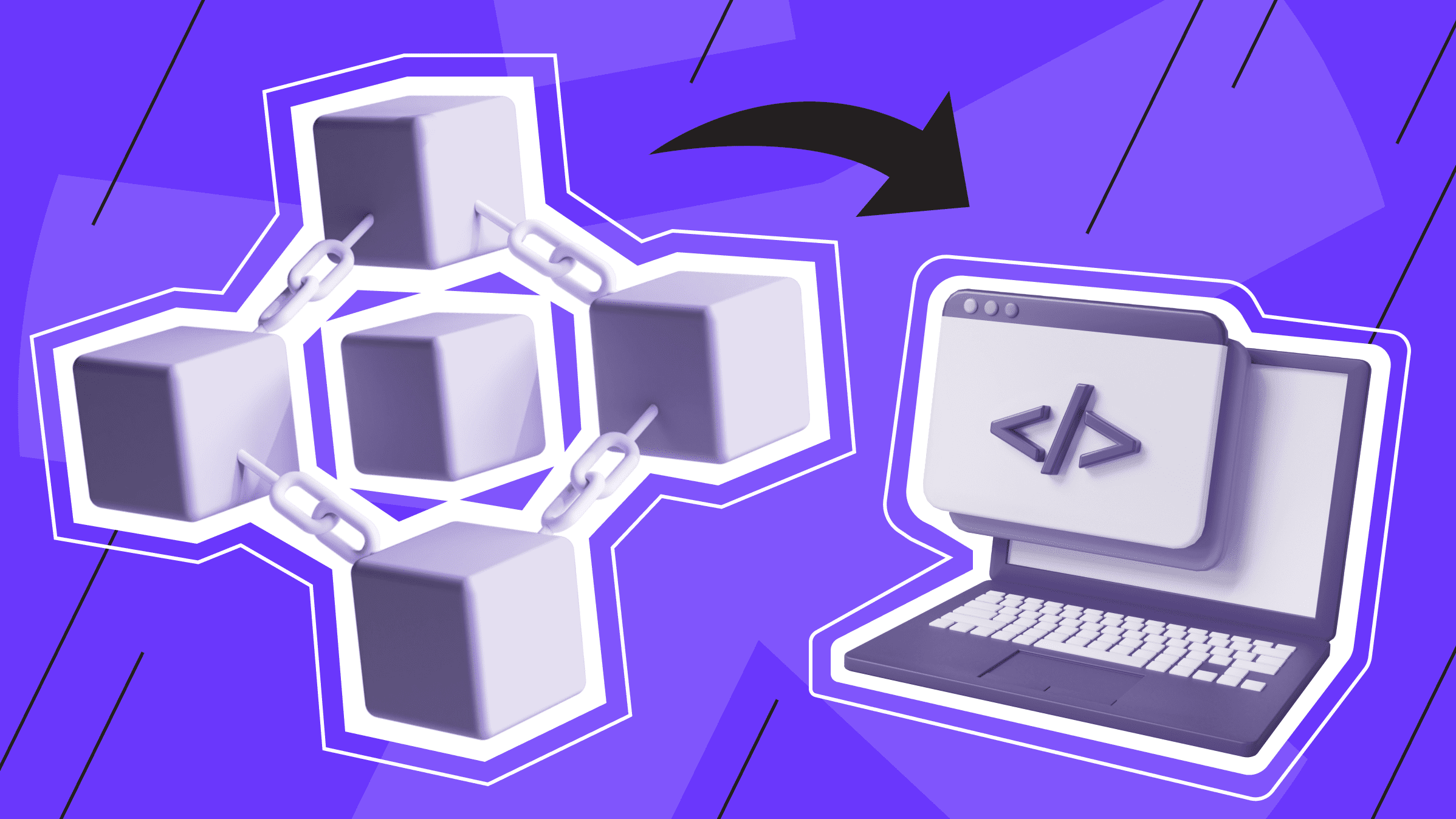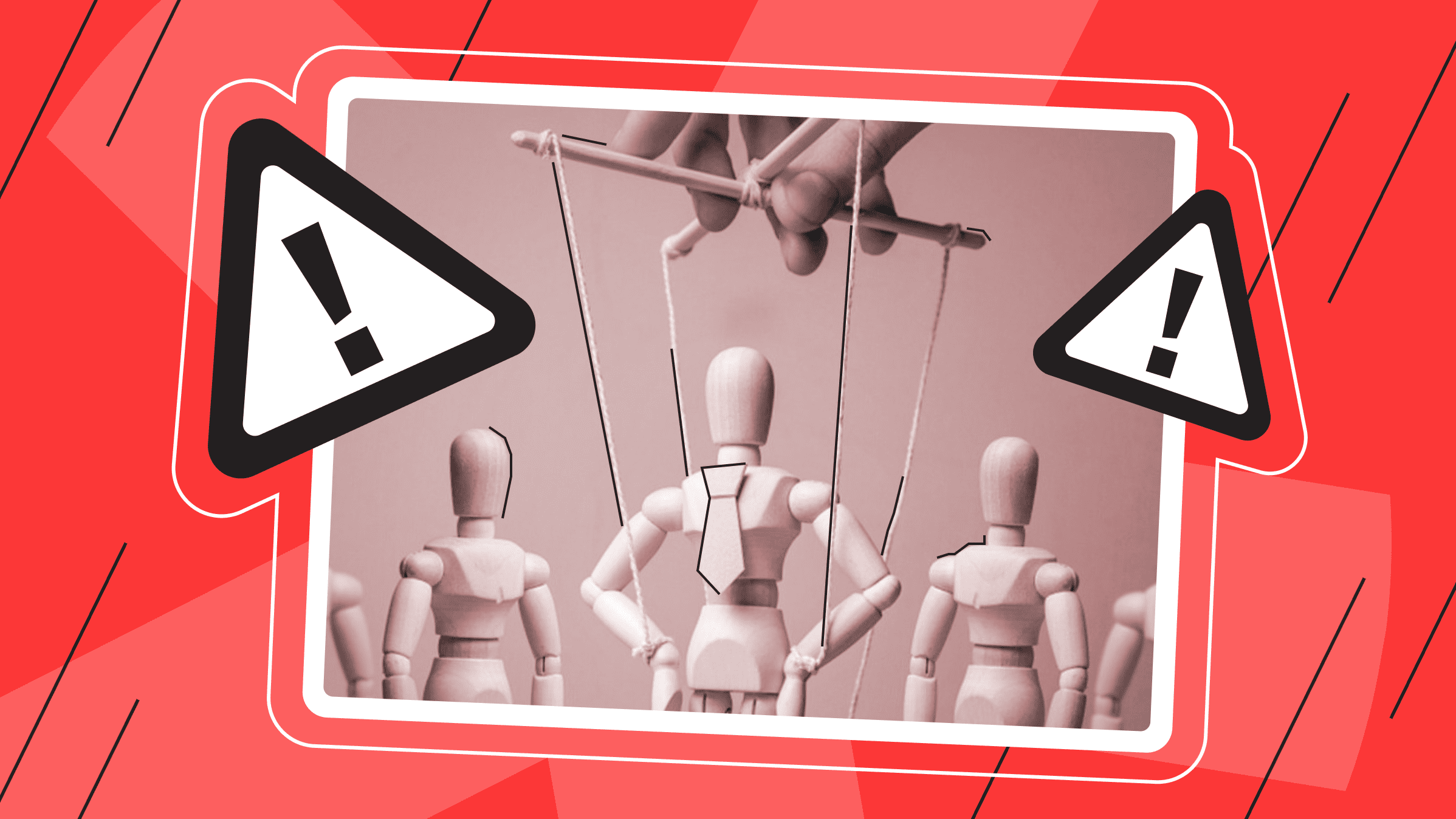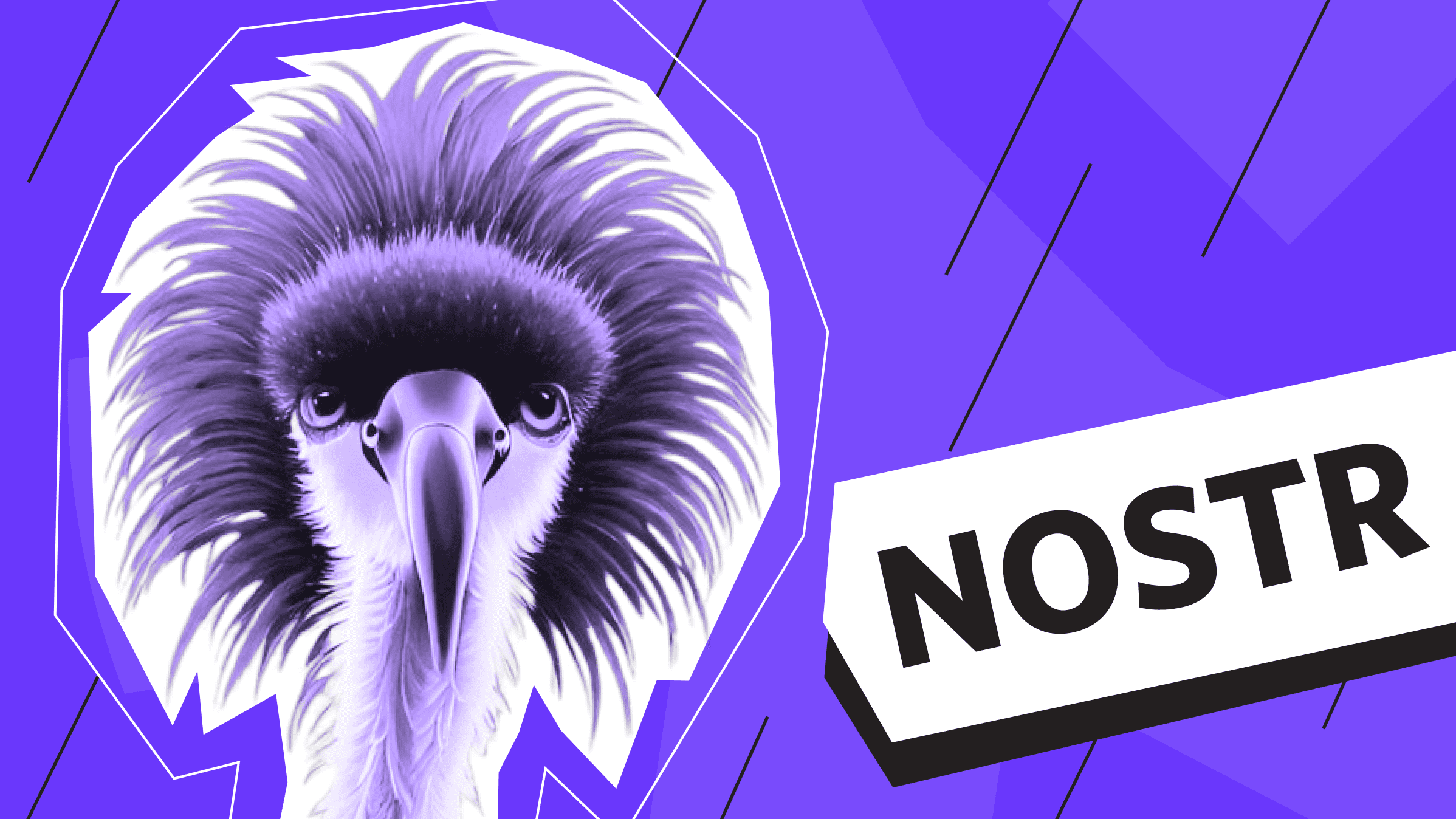
Each network member controls the network, making hacking quite tricky. Decentralization keeps the network highly available and secure, and cryptography secures payments. Sounds like something perfect? Not so fast.
This article is about blockchain technology, which is the basis of cryptocurrencies such as Bitcoin. Blockchain allows you to organize the open exchange of information within a business network, keeping it an almost impregnable fortress.
The principles of blockchain have changed the way networks are designed, making them more secure and protecting users' activities. How can we use blockchain technology in software development?
What is Blockchain Technology?
Blockchain technology is a distributed ledger that records transactions in a way that's tamper-resistant and auditable.
This decentralized, distributed ledger system keeps track of an ever-growing list of records called blocks. Each block has a timestamp, a transaction record, and a link to the previous block. Once a block is created, it can't be changed retroactively without changing all subsequent blocks.
The blockchain network gained significant popularity thanks to Satoshi Nakamoto in 2008. Nakamoto improved on previous versions of the technology and, in 2009, launched the first version of the Bitcoin cryptocurrency, which implemented a decentralized blockchain that ensures the storage of all transactions in the system.
How does Blockchain Technology Work?
Blockchain technology is all about using a peer-to-peer network of computers to keep a shared ledger of transactions. Each computer on the network has its copy of the ledger, and when a new transaction is added to the ledger, it is sent to all other computers on the network. The computers then verify the transaction and add it to their ledger copy. This process ensures that the transaction ledger is always up to date and that all computers on the network have the exact copy.
The security of blockchain technology comes from its decentralized nature. That means no central authority can be hacked or gain power over it. To change the ledger, an attacker would need to control more than 50% of the computers on the network, which is pretty tough to do.
Blockchain Components

Here is a brief overview of the components and features that make blockchain technology work:
- Distributed ledger. A blockchain consists of a distributed database shared among multiple nodes on a computer network. Each node stores an identical copy of the ledger.
- Peer-to-peer network. Nodes communicate directly with each other over a peer-to-peer network without intermediaries, allowing for decentralized control and management of the ledger.
- Cryptographic security. Transactions recorded in the ledger are protected by encryption. Data is grouped into blocks linked together using cryptography to form a chain (hence the blockchain).
- Consensus mechanism. Сonsensus must be reached among the nodes in the network to make changes to the ledger. Standard consensus algorithms include proof-of-work and proof-of-stake. This ensures that all copies of the ledger are consistent and synchronized.
- Smart contracts. are self-executing contracts whose terms are written directly in lines of code. The code and the agreements it contains exist on the blockchain network. This code controls the execution of the transaction terms and the transaction itself.
- Immutable record. Once data is written to a block, it is locked using cryptography. While new blocks can be added, existing blocks cannot be changed without consensus, making the recorded data secure and immutable.
- Auditable and verifiable. Because the ledger is distributed across many nodes, no single party controls it. Anyone can verify transactions by analyzing the blockchain, providing transparency and traceability.
You can begin learning blockchain technology by understanding and learning the essence of these features.
Advantages and Disadvantages of Blockchain Technology
Blockchain technology has played a significant role in the world of technology and has gained considerable popularity. However, despite the perceived benefits, it still has its drawbacks.
Why you should use blockchain technology:
- Decentralization. The blockchain is not controlled by a single person or company. Instead, the consensus of a decentralized network governs the system.
- Security. Cryptography and distributed architecture make the blockchain secure and resistant to alteration or hacking.
- Transparency. Transactions are visible to anyone with access to the blockchain network.
- Immutability. Once transaction records are added to the blockchain, it is extremely difficult or impossible to change or delete them.
- Cost savings. Automating processes reduces some costs compared to traditional centralized systems.
Some restrictions remain in place:
- Scalability limitations. Many public blockchains today need to scale better as the number of transactions increases. However, a solution has already been proposed - the Lightning network.
- Latency. Due to network latency between nodes, transaction speeds in blockchain technology can be slower than in centralized databases.
- Technical complexity. The concepts underlying blockchain can be complex and require specialized knowledge to implement.
- Transaction irreversibility. You won't be able to correct transaction errors, or it will be challenging to do so.
- Energy consumption. The mining systems used to validate transactions require a lot of computing power, resulting in high energy consumption. Why use green hosting?
Thus, while blockchain offers benefits related to decentralization, security, and immutability, it also has scalability, performance, and technical understanding challenges that need to be overcome in some use cases. Nevertheless, these challenges have not prevented blockchain from having a widespread impact on various business sectors.
Impact of Blockchain on Business

Due to its widespread use, blockchain has significantly impacted businesses and entrepreneurs. Secure transactions are still popular and widely used today.
Blockchain's enhanced security comes from the technology itself: end-to-end encryption creates an immutable record of transactions, preventing fraud. Users can remain anonymous without revealing their identity, one of the critical benefits of the technology that businesses and their customers can enjoy.
On the other hand, organizations that do not use blockchain from a transactional perspective have adopted some of its components. In this case, companies from completely different industries have benefited.
Blockchain technologies automate labor-intensive processes to maximize efficiency. Blockchain can process transactions at lightning speed, in some cases in seconds. Technology can also solve the problem of verifying the truth of data. A good example is an extensive university database that stores graduate data, which is accessible to recruiters. In this way, falsifying data in resumes is impossible because authorized professionals can easily verify them.
Blockchain has also changed the way shipments are tracked. Walmart, for example, has integrated blockchain technologies into its processes to increase transparency in its decentralized food supply ecosystem. By September 2018, the company was able to track more than 25 products from five different suppliers, including mangoes, leafy greens, strawberries, dairy products, meat and poultry, packaged salads, and even baby food. Walmart can track every step, from creating the products to packaging and shipping them.
Another excellent example of how technology is being used is through smart contracts. These are just codes used on the blockchain to regulate the agreement between two parties who agree to fulfill certain conditions. If one party doesn't comply with the smart contract terms, the service or product is returned to the other party. This means there's no need to involve government agencies or another third party to resolve the conflict.
The impact of blockchain continues beyond that. We want to focus on how blockchain technology is improving many software development processes.
Blockchain in Software Development

Successful use cases show how we can use blockchain technology in software development. The software doesn't even have to be related to cryptocurrencies. What blockchain components can be helpful in development?
Data Distribution/Replication
Data distribution, also known as data replication, is a big part of blockchain technology. It basically means storing data on multiple nodes in the blockchain network, which makes it harder for censorship and fraud to occur.
Blockchain technology in software development can be used to create apps that need to share data between different systems, even if there's no trust like decentralized apps (DApps).
We can say that a DApp is just an ordinary app, but it's been deployed on a decentralized blockchain network. Such an app is accessible to everyone and provides complete transparency, so it's free from regulators and censorship inherent in centralized apps.
Let's look at Audius as an example. It's a blockchain-enabled entertainment service. It's a music streaming platform with a model similar to Spotify, where artists get paid in AUDIO tokens.
The decentralized messenger Session is also worth mentioning. It supports end-to-end encryption, minimizes the use of metadata, and hides user identities by default. One of its interesting features is the absence of the usual registration. Instead, a random unique ID is generated when an account is created, and the user's real IP address is hidden.
Another exciting implementation is Nostr. Nostr stands for "Notes and Other Stuff Transmitted by Relays" and is a decentralized network based on cryptographic key pairs. Nostr is an open-source social networking protocol that provides a censorship-free and accessible application on any operating system. Why is Nostr called the killer of X (Twitter)?
Other applications of DApps include auctions, where blockchain principles ensure transparency, financial services, and gaming applications such as online casinos.
Public and Private Key Cryptography
Public and private key cryptography is another essential component of blockchain technology used to secure transactions and protect the data stored on the blockchain.
So, if your application handles sensitive data or your users need to change the authentication method (for example, move away from a login/password system), you can use cryptography. By creating authentication and authorization mechanisms in applications where cryptographic proof of identity is essential, you can avoid some of the problems you may encounter when using login/password authentication.
Nevertheless, it is worth considering that:
- Public keys encrypt data, and private keys decrypt it. This means that even if a hacker intercepts encrypted data, they cannot decrypt it without the private key.
- This method is scalable, which means it can authenticate a large number of users without compromising security.
- Public-private key cryptography can be complex to implement. It requires the creation and management of public and private keys, as well as the development of algorithms for encrypting and decrypting data.
- Encryption and decryption operations can be time-consuming, especially when dealing with large amounts of data.
- Public key and private key cryptography are still vulnerable to attack. Hackers can use brute force attacks to guess private keys or side-channel attacks to extract private keys from devices.
In general, public and private key cryptography provides high security for authentication in programs and applications. However, it is crucial to be aware of the potential drawbacks of this technology before implementing it.
The ideal solution for large projects. Impeccable protection, high performance and flexible settings.
Peer-to-peer Network
A peer-to-peer network allows network nodes to communicate directly with each other without a central authority. This distributed architecture makes the network more reliable.
The peer-to-peer model lets you add collaborative features to software where decentralized coordination and consensus are essential. For instance, you can use peer-to-peer networking to develop these apps.
- Streaming media apps. A peer-to-peer network lets you stream media content between computers without a central server. This can be useful for streaming live events.
- Gaming apps. Peer-to-peer networks can be used to create multiplayer games that don't need a central hub. For instance, one player acts as a server and sets up the game locally, and all other players must connect to it.
- Distributed computing applications. A peer-to-peer network easily spreads power-hungry computing tasks across multiple computers. This lets you process things in parallel, which speeds up complex tasks.
Peer-to-peer networks are a powerful technology that can be used to create all kinds of distributed applications. So you can safely experiment.
Smart Contracts
Smart contracts are self-executing contracts (code) that automate the execution of agreements and transactions. They can be used for various purposes, including financial transactions, supply chain management, and voting.
Smart contracts provide a way to embed automated agreements and conditional logic into distributed applications and business processes.
Smart contracts can automate financial transactions such as payments, loans, and investments. This can reduce the need for intermediaries such as banks and make financial transactions more convenient and secure. The introduction of smart contracts also makes the automation of real estate transactions such as buying, selling, and renting possible.
If you have an offline business and want to automate specific processes, smart contracts can be used to track the movement of goods along the supply chain. You can increase transparency and accountability and reduce fraud.
Smart contracts are reasonably powerful tools that can automate various tasks beyond the processes we are already accustomed to doing manually or with personal involvement.
How to Implement Blockchain Technologies in Software?

The application of blockchain technology is a fairly complex process and requires some technical knowledge. Here are some basic steps you will definitely go through along the way.
1. Identifying your needs
The first thing you need to do is figure out what you need and organize it. Understand what problems you want to solve and ensure blockchain integration solutions can solve them. This is a specific problem, situation, or issue that blockchain can solve better than other technologies.
2. Developing proof-of-concept (POC)
Proof-of-сoncept, or POC, is a strategic process used to assess how viable the use of blockchain will be for your organization. This can be done by using a prototype that successfully demonstrates the use of blockchain for a specific scenario. This phase includes scope definition, technical architecture design, prototype development, and demonstration and analysis of the completed prototype.
3. Choosing a blockchain platform
When choosing a blockchain for your business, you can select one of the popular platforms, but we recommend digging deeper into the different options and how they work. Quorum, Stellar, Corda, and other options can be beneficial from different perspectives.
4. Choice of consensus protocol
To get started with the application of blockchain, you'll also need to choose a blockchain consensus protocol, a program whose purpose is to allow the blockchain system to reach complete agreement on the state of the ledger.
The two most popular consensus protocols are "proof-of-work" (PoW) and "proof-of-stake" (PoS). Others include "proof-of-authority" ("private" or "authorized") and consortium (also known as "federated" or "semi-private").
The Proof-of-Work (PoW) consensus mechanism is what Bitcoin is built on, and it is the first consensus protocol that has been successfully implemented to manage a decentralized system. The PoW consensus protocol works by using different machines to compute complex mathematical problems. It configures itself to solve the problem, becoming more complicated as more machines participate. When the problem is solved, the miner is rewarded with cryptocurrency per block. This is why Bitcoin could initially be mined on ordinary computers, whereas now, Bitcoin farms require expensive equipment.
The Proof-of-Stake (PoS) consensus mechanism was developed as a low-cost, low-power alternative to the Proof-of-Work consensus protocol. Blockchains such as Polygon, Solana, and now Ethereum use the PoS protocol. The operating principle of PoS differs significantly from PoW: instead of miners verifying transactions, virtual entities in Ethereum called "validators" do this work. Once validated, the blocks are placed on the blockchain.
To create a validator, participants must stake 32 ETH (bet or share), and if they are found to be acting maliciously, they will lose the amount they have staked. In this case, there are concerns about centralization, as only people with a large amount of cryptocurrency at stake are involved in this process. A PoS validator is selected to offer a block to the blockchain, providing network security, and is rewarded for doing so.
Before choosing a particular option, we recommend exploring this issue further.
5. Working with a blockchain solution
You must decide which blockchain to make your applications when building a blockchain-based solution. These can be:
- Layer 1. A fundamental layer with a standard structure, consensus mechanism, and protocol. They are secure but slower than other layers or off-chain solutions.
- Layer 2. It is built on top of Layer-1 blockchains to improve functionality. This is done by processing transactions outside the blockchain.
- Sidechains. These are separate blockchains that connect to the first layer but are independent. They can have their structure, consensus protocols, and smart contracts.
- Private chains. Private chains are used for corporate transactions and are more scalable and customizable than the underlying chain. They are used to build custom apps with different requirements.
Get the most out of your budget with our affordable, efficient VPS solutions. Fast NVMe, 30+ countries, managed and unmanaged VPS.
6. Smart contract development
Smart contracts let people interact with a DApp, exchange tokens and do other things without intermediaries. All parties must follow the rules of the smart contract, and the contract itself cannot be changed once it is on the blockchain. This is why paying attention to how it is created and verified is essential.
If there is a vulnerability in a smart contract, someone will definitely exploit it.
7. Network operation
You need to maintain the underlying blockchain, scale it as needed, pay close attention to the implementation's security, ensure the nodes are working, and ensure the consensus protocol used is up to date.
It is crucial to keep the network current and monitor its effectiveness in addressing the needs you identified in step one. This can affect the costs you incur in the future.
The Future of Blockchain Technology

Blockchain technology can potentially change how software is developed in many industries, and it has already done so. As developers keep exploring the possibilities of blockchain beyond cryptocurrencies, we can expect to see more development of both the technology itself and its different uses.
We all know that data integrity and security are the most important aspects of software development. Today, blockchain can be used to create robust, immutable logs of data access and changes, which helps to make things more secure and compliant.
By adopting blockchain technology, Walmart has taken its supply chain monitoring systems to a whole new level. It's a big leap from when anyone thought about linking a wholesale and retail company with blockchain.
New apps will take advantage of blockchain's special powers, like its ability to set up decentralized systems. Governments will probably start to oversee blockchain tech more to keep consumers and businesses safe from fraud and other risks.
Blockchain technology has the potential to change the world in many ways. It's a powerful technology that can be used to create more secure, transparent, and efficient systems.
Conclusion
Blockchain networks have taken over the world with their decentralization and security. Anyone can use a decentralized blockchain, and participants have complete control over their transactions and actions. They don't need permission from a centralized authority to use it.
Also, the blockchain is a reliable and permanent historical record of all transactions made on the network. It can be referenced when new blocks are verified, and this is enabled by its transparency and immutability.
While scalability might be a problem in some blockchains, it's something you should consider before using blockchain technology in a business. However, many companies are still using blockchain in software development. Automation and reliability are becoming increasingly important for business growth, and blockchain is often a good investment.
The constant evolution of blockchain and available technologies makes this field more and more attractive and allows many organizations to grow with it.
Data Storage
Store your backups or personal data in a safe place - is*hosting will take care of the protection.
Get $2.00/mo

